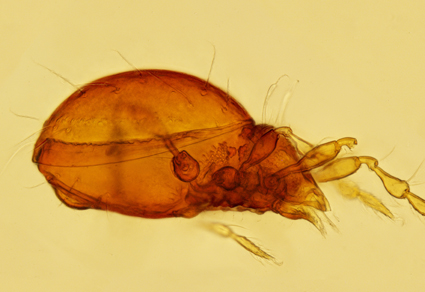Abstract
Two new species of the genus Allosuctobelba, A. (Allosuctobelba) polita sp. nov. and A. (A.) subiasi sp. nov., are proposed and described based on adult material collected from central China.
References
- Aoki, J. (1984) New and unrecorded Oribatid Mites from Amami-Ohshima Island, Southwest Japan. Zoological Science, 1, 132–147.
- Chinone, S. (2003) Classification of the Soil Mites of the Family Suctobelbidae (Oribatida) of Japan. Edaphologia, 72, 1–110.
- Corpuz-Raros, L.A. (1979) Philippine Oribatei (Acarina). 1. Preliminary list of species and descriptions of forty new species. Philippine Agriculturist, 62 (1), 1–82.
- Ermilov, S.G. (2023) New Suctobelbidae (Acari, Oribatida) from Mexico. International Journal of Acarology, 50 (1), 10–17. https://doi.org/10.1080/01647954.2023.2293872
- Ermilov, S.G. & Anickin, A.E. (2014) Taxonomic study of oribatid mites (Acari, Oribatida) of Bi Dup—Nui Ba National Park (southern Vietnam). Zootaxa, 3834 (1), 1–86. https://doi.org/10.11646/zootaxa.3834.1.1
- Ermilov, S.G. & Starý, J. (2018) New and interesting oribatid mites (Acari, Oribatida) from Hanoi (Northern Vietnam). Systematic & Applied Acarology, 23 (1), 61–77. http://doi.org/10.11158/saa.23.1.5
- Krivolustky, D.A. (1971) Some new oribatid mites from Altaj and Soviet Far East (Acariformes, Oribatei). Vestnik Ceskoslovenske Spolecnosti Zoologicke, 35 (2), 118–125.
- Liu, D. & Chen, J. (2024) Checklist of oribatid mites (Acari: Oribatida) from China. Systematic & Applied Acarology, 29 (7), 891–1026. https://doi.org/10.11158/saa.29.7.8
- Mahunka, S. & Mahunka-Papp, L. (1999) Oribatid mites from Switzerland, IV (Acari: Oribatida: Suctobelbidae). Acta Zoologica Academiae Hungaricae, 45 (4), 375–381.
- Mahunka, S. & Mahunka-Papp, L. (2001) Oribatids from Switzerland V (Acari: Oribatida: Suctobelbidae 2). (Acarologica Genavensia XCVII). Revue Suisse de Zoologie, 108 (2), 355–385. https://doi.org/10.5962/bhl.part.79635
- Moritz, M. (1970) Revision von Suctobelba trigona (Michael, 1888). Ein Beitrag zur Kenntnis der europäischen Arten der Gattung Suctobelba Paoli 1908 sensu Jacot, 1937 (Acari, Oribatei, Suctobelbidae). Mitteilungen aus dem Zoologischen Museum, 46 (1), 135–166. https://doi.org/10.1002/mmnz.19700460117
- Norton, R.A. (1977) A review of F. Grandjean’s system of leg chaetotaxy in the Oribatei (Acari) and its application to the family Damaeidae. In: Dindal, D.L. (Ed.), Biology of oribatid mites. SUNY College of Environmental Science and Forestry, Syracuse, pp. 33–61.
- Norton, R.A. & Behan-Pelletier, V.M. (2009) Suborder Oribatida. Chapter 15. In: Krantz, G.W. & Walter, D.E. (Eds.), A Manual of Acarology. Texas Tech University Press, Lubbock, pp. 430–564.
- Paoli, G. (1908) Monografia del genere Dameosoma Berl. e generi affini. Redia, 5, 31–91.
- Subías LS. (2022) Listado sistemático, sinonímico y biogeográfico de los ácaros oribátidos (Acariformes, Oribatida) del mundo (excepto fósiles). Monografías electrónicas. 12, 1–538. update 2024 Available from http://bba.bioucm.es/cont/docs/RO_1.pdf (accessed 27 March 2024)


